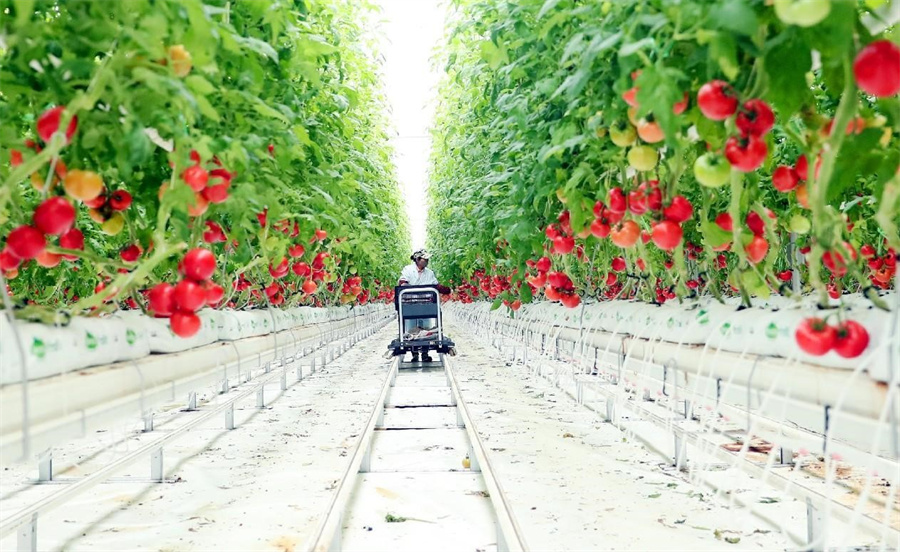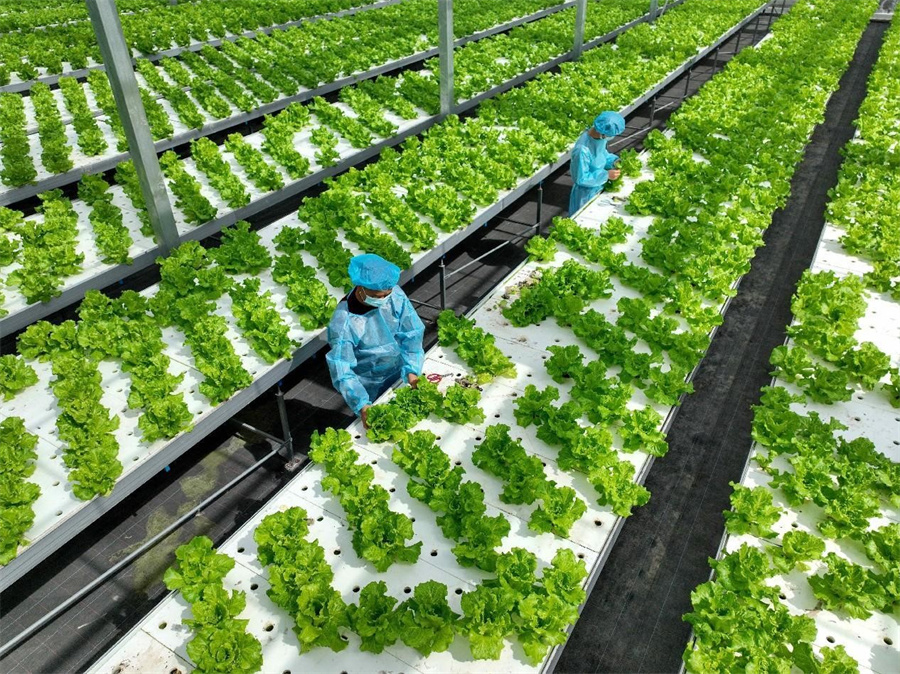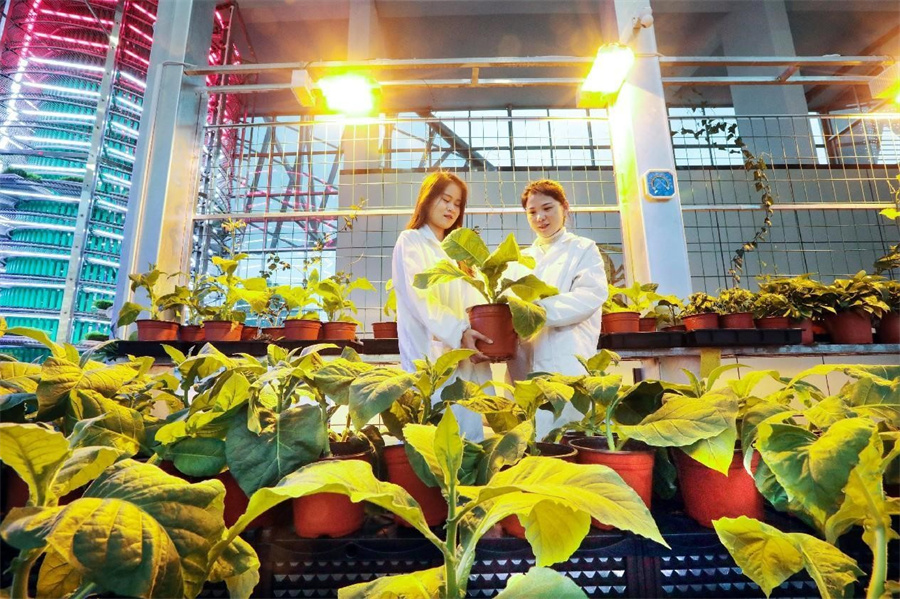China makes progress in development of "plant factories"

An employee picks tomatoes in a plant factory in Urumqi, northwest China's Xinjiang Uygur autonomous region. [People's Daily Online/Zhang Xiuke]
It's freezing cold outside in winter, but inside a "plant factory" of an agricultural tech firm in Beijing, it's as warm as spring.
The "plant factory," which covers 100,000 square meters, looks just like a technology-based "tomato forest" where 39 varieties of tomatoes are grown. The fresh tomatoes produced in the factory are welcomed by the market.
The factory has its environment controlled by digital platforms and comes with a water-fertilizer irrigation system. It is a nonstop vegetable-growing operation.
Plant factory is an efficient way of agricultural production realized via high-precision environmental control that offers appropriate lighting, temperature and nutrition needed by the growth of plants. The factory-like facility enables all-year-round production of crops.
China, though a latecomer in the area, has witnessed rapid development in key technologies and commercialization of plant factories. It has become a major player in the industry and is home to 250 commercial plant factories.
Besides, the country is a world leader in the field of energy conservation in the industry. The promotion and utilization of energy-saving LED lights, nutrient solutions, intelligent management and other technologies have laid a solid foundation for the rapid development of plant factories.
Plant factory, combining biological technologies, engineering technologies and system management, enjoys abundant advantages and generates multifaceted benefits.

Workers harvest hydroponic lettuce in a plant factory in Nantong, east China's Jiangsu province. [People's Daily Online/Xu Congjun]
It needs no soil or sunlight, and grows food anytime and anywhere. Through intelligent regulation, it significantly reduces the growth period and multiplies the production of crops. Besides, it features a soilless culture that is clean, safe and pollution-free.
Plant factories expand the function of urban agriculture and also can be built on uncultivated areas such as deserts and saline-alkali land. They help relieve China's pressure from insufficient agricultural resources and play an important role in promoting agricultural efficiency and increasing farmers' income.
The industry enjoys bright prospects, but also faces a bottleneck that needs to be shattered - high operational costs caused by big energy consumption.
China is currently working to lower the energy consumption in artificial lighting and air conditioning systems and to achieve intelligent management of plant factories, aiming to further promote research and industrialization of the sector and build a production system that's low-carbon, smart and efficient.
China is a populous country with relatively scarce land and water resources. Its per capita area of arable land and freshwater resources stand at around 1/3 and 1/4 of the world average, respectively. Therefore, it is necessary to conserve resources and improve resource utilization.
China's agricultural industrialization level continues to improve, and its first, secondary and tertiary industries highly integrate. New models of agricultural production are emerging, which are less seasonal and more geographically diverse.

Technicians check the growth of plants in a plant factory in Ma'anshan, east China's Anhui province. [People's Daily Online/Wang Wensheng]
Compared with traditional agriculture, plant factory, a type of modern facility agriculture, has overcome deficiencies such as high reliance on weather and weak disaster resistance. Relying on modern facilities and technologies that create a desirable environment, plant factory realizes high utilization of resources and is an important method to build resource-saving and environmentally friendly agriculture.
Facility agriculture experienced rapid development in China over the past four decades. The facility horticulture sector alone has reported an output of over 1.4 trillion yuan ($205 billion), accounting for over 2/5 of the total horticultural output and over a quarter of the agricultural output of China. Its economic benefit is more than 20 times that of field crops and more than four times that of open-field horticulture crops.
The facility horticulture sector has saved over 30 million mu (2 million hectares) of quality land. Besides, water consumption by facility vegetable farming is less than half of that by traditional vegetable farming, and 10-million-mu unheated solar greenhouses can save coal consumption by more than 250 million tons each year.
Technology has become a main trend today to assist and vitalize modern agriculture. From developing plant factories and vertical farms to promoting modern cold-arid agriculture, Gobi agriculture and marine farms, China is advancing the three-dimensional utilization of space and constantly expanding agriculture production. It is believed that the continuous development of facility agriculture will inject a stronger impetus into China's modern agriculture.
























